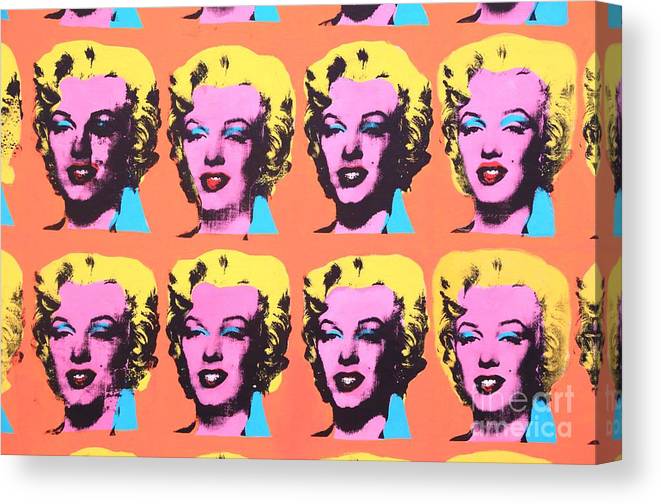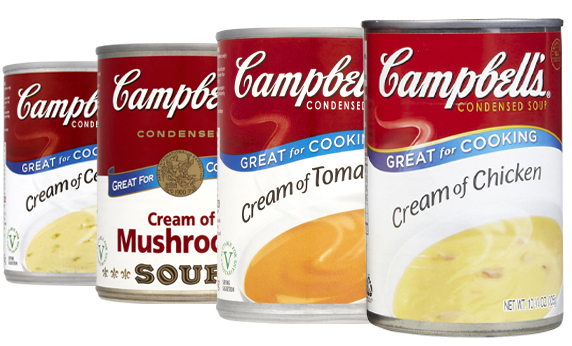
Repetition is when the same motif is repeated repeatedly in art. The artist strives to reach a high standard of perfection. There's more that repetition art than just repetition. Artists want viewers to have an experience they can't find anywhere else. Here are some examples.
Andy Warhol
Andy Warhol's repetition is a kind of conceptual art that sees an artist repeatedly create the same image. The artist took a photograph from a fleamarket skull and modified it six different times. Andy Warhol was fascinated by modernizing the skull motifs. They have a long, rich history. The skull's deep black eyes are starkly contrasted by Warhol's use of bright candy colours. The images remind viewers how death is part of human life.
Damien Hirst
Damien Hirst's repetition artwork is both shocking and hypnotic. Its subject is the cycle of life. This cycle can be repeated many times. Many objects in his sculptures have no common purpose and seem horribly real. The sculptures are often rendered in great detail, which can create a trance-inducing atmosphere.

Do-Hu Suh
Do-Hu Suh is a South Korean artist whose work explores the idea of home through repetitive forms. Born in Seoul. He lived in Berlin, New York, London, and then moved to London. His work can be found in video installations as well as lightbox works and white fabric sculptures. Do-Hu Suh makes multiple versions of one figure through a series called hubs. The piece symbolizes a journey through life.
Gustav Klimt
Gustav Klimt’s repetition work is a perfect example of how his visions go beyond the everyday to reach the sublime. His visions merge the traditional and the contemporary, and his paintings are colorful and rich in ornamentation. His central theme is the beauty of women.
Yayoi Kusama
The repetition art of Yayoi Kusama is both complex and accessible. Infinity Mirror Rooms were created by the artist in 1960s. She has since made over twenty different installations. The rooms consist in a chamber that is enclosed and lined with mirrors. Kusama's installation is a window into her thoughts, immersing viewers in her vision.
Allan McCollum
Allan McCollum's repetition art focuses on the tension of uniqueness and mass production. The artist's work, which began in the late 1960s, examines the notion of identity in the age of mass production. McCollum's work explores the meaning and individuality of each object and often addresses the question of how people see themselves within the context of mass culture.

Piet Mondrian
In 1908, Piet Mondrian's Red Tree, a large painting, depicted the violent balance between red and blue skies. This work, which was luminous and evocative, was part of a group display at Amsterdam's Stedelijk Museum. Mondrian became a member two local artist societies in 1894. Mondrian was heavily influenced early in his career by the Dutch impressionist movement.
M.C. Escher
Escher used both mathematical and physical concepts in his work. He began by creating abstract geometric shapes and slowly replaced them with stylized animal figures. Escher's unique work covered all of the paper without leaving any negative space. In some of his most famous works, he even incorporated shading and perspective. The Penrose Triangle was also a mathematical concept that he used. This geometric shape is closely related to the Mobius Strip and the impossible object.
FAQ
What are the best examples of pop-culture today?
Pop Culture refers to the art form of 21st century. Pop Culture includes all forms of popular entertainment such as music, film, TV and video games, fashion, advertising and comics. This term was created by Neil Postman, author of Amusing Ourselves and Death (1985). Pop refers to mass communication that uses formulaic and cheap tricks to create an illusion or spontaneity.
However, he said that most people don’t enjoy true enjoyment because their culture has conditioned them to want media experiences that make it seem superior to others. He also suggested that this form of cultural expression had led to the loss in critical thinking skills among young adults.
Pop culture is sometimes also called popular culture, consumerism, or pop culture.
How did pop culture develop?
The development of popular culture was driven by technology. It developed as people became more mobile. The radio was the first to allow mass communication. This allowed for the rise of television and the birth of the internet.
People began using computers at home, and were then exposed to computer games. These games were first played on consoles such as the Nintendo Wii or Sony Playstation 3. You can now download them online for free. Many youngsters now choose to play videogames over watching TV.
Video games are very popular with children and teenagers. They can be played alone or with friends via the internet. Call Of Duty and Grand Theft Auto games are very violent. Some parents worry about their children playing these games. Others find it fascinating to see what happens to a character when they die.
Music videos are another way pop culture influences youth. They are a great way to learn about celebrity news and the latest trends. They are loved by young people. It's obvious that music is a major part of our lives.
Many artists use special effects in music videos to enhance their songs. Rappers, for example, use makeup and wigs in order to appear more attractive. Others put themselves through extreme physical demands to show off their bodies. Many singers perform while wearing costumes.
There are so many options for music today. You can listen any music you wish. This isn't always a good thing. Music can be a motivator for violence. People become angry when they hear certain lyrics and words. Sometimes, they even commit crimes.
50 Cent recently experienced this. One line in his song Get Rich Or Die Trying says: "I'm going after a motherfucker / But I don't know how, but I might." This song was thought to mean that he would murder someone. He was threatened by a man who called him. So 50 Cent changed the lyrics. It now reads: "I'll shoot an inchch down/ I'm not sure why, but I may."
Popular culture is essential. We need to understand how it affects us. If we don’t understand how it affects us, we won’t be able prevent its harmful effects.
What is pop culture?
Pop culture is all around us. It's everywhere we go: TV, radio, film, music, magazines, newspapers, websites, social networks, etc. It surrounds us all day. It is everywhere, including our clothing, food, language, politics, religion, and music. So what exactly is pop culture? According to Wikipedia, "Popular culture (or popular culture) refers to the products and ideas produced for mass consumption in society." Many people think that this term applies to television shows, movies, music, fashion, and other forms of entertainment. Pop culture does not only include entertainment. Pop culture can be described as anything that is consumed by mass audiences, including video games, toys, clothing and fast food.
Is Tik Tok pop-culture?
The answer is yes! It's not just for teenagers anymore. These videos can be used by anyone to express their feelings, share life moments, and show support.
The app is used daily by more than 200 million people around the globe. Each day, the number of users grows by millions.
TikTok is a great way for brands to connect and create meaningful relationships with consumers.
TikTok is also home to many influencers who have built massive followings on the platform. These creators create original content and engage audiences around the world.
So, what are you waiting? Here are four ways you can take advantage of this trend.
-
Create viral content
-
Engage Influencers
-
Use Visuals Effectively
-
Be creative with your audience
What can pop-culture teach us?
Modern society places more emphasis on material possessions than other things. This is especially true for young people. They spend hours daily looking at screens. They surf the internet, watch movies, and play video games. All of these distract them from the task at hand, which is to complete school work. As a consequence, they often fail classes.
The world we live in is one where everyone wants the same thing. That means being popular. Popularity depends on money, clothes, and other possessions. This leads some people to do things that aren't right.
We have become too dependent on technology. The internet has made it possible to access all sorts of information. Not everything is accurate. Many false rumors circulate on the Internet. These rumors quickly spread because people share them through social media. It's easy and quick to post something without verifying whether it is true.
People have lost the ability of thinking critically. People believe everything they see on the Internet. They believe what they read in magazines or on TV. They stop thinking for themselves. Instead, they follow the crowd.
We lose control when we rely on other people to tell us what's up. Pop culture teaches us that we can depend on others. It also makes us lazy. It's true that there is truth out there but we don’t always find it.
What are some good aspects of pop culture
Pop culture has some positive aspects. Pop culture can be used to spark conversation. It also allows people to express their creativity. Pop culture can help artists promote their work.
In my opinion, the best thing about pop culture is that it brings people together. Everyone wants the same shows. Everyone has a favorite song. Everyone likes the same movies. Pop culture allows people to connect.
Not all pop culture is healthy. Some movies glorify violence. Some TV programs mock people with mental disabilities. Some bands also encourage fans to take drugs.
So what do we do when pop culture has negative aspects?
Pop culture should be avoided. We shouldn't let it influence us. It can lead to problems in our health. It can lead to crime. It can even affect our relationships.
Pop culture has a positive or negative impact on society. Is it promoting good values? Are people being indoctrinated to do terrible things?
And finally, we should ask ourselves whether we're happy with the kind of world we live in. What music do you like? The TV programs we watch What clothes do you wear?
If we care about our future, we must take responsibility for our actions. We must decide the world we want. Then, we can choose which type of pop culture to follow.
Why pop music is popular?
Pop music is very popular because it's fun! Pop music makes you feel happy, and it gives you a lot of freedom. Pop music is a popular choice and people can think about whatever they want. They don't need to worry about what others think. Pop music is very popular because it doesn't have to worry about what other people think. People like listening to songs that make them feel good. You can turn the radio on if you feel down. You may even find yourself singing along. Pop music is a success because of this.
Statistics
- According to Dictionary.com, popular culture, or low culture as it is sometimes referred to is comprised of the “cultural activities or commercial products reflecting, suited to, or aimed at the tastes of the general masses of people” (7/21/19). (socialsci.libretexts.org)
- For example, the term hater meaning someone who strongly undermines or criticizes others, often due to pathetic jealousy, likely emerged from hip hop culture, such as the term playa hateras, used by influential rapper Biggie Smalls as early as 1995. (simplicable.com)
- Yet a Nielsen study shows they account for 42% of the country's most-watched content on streaming services. courtesy Nielsen (npr.org)
- Less than a decade later, that statistic rose to 90% (Dager, n.d.). (socialsci.libretexts.org)
- In 1987, US films captured 56% of the European film market. (socialsci.libretexts.org)
External Links
How To
What are some of the most famous pop culture references you can think of?
Americans were obsessed with space travel in the 1960s. Star Trek was the most famous TV series of that era.
The original series aired from 1966 to 1969 on NBC. It featured William Shatner, Leonard Nimoy, Mr. Spock, DeForest Kelley, James Doohan, Dr. McCoy, and James Doohan as Scotty. (Wikipedia)
In 1967, the series was the subject of the first feature-length film. Paramount Pictures released the movie, "Star Trek". The movie, directed by Robert Wise, featured an ensemble cast including William Shatner, Leonard Nimoy, DeForest Kelley, James Doohan, Walter Koenig, Majel Barrett, Roland Nichelle Nichols, George Takei, and Grace Lee Whitney. (Wikipedia)
In 1968, the second season started airing on television. This second season focused on the crew's journey back in 1969. (Wikipedia)
A few years later, in 1971, the third season of the television series started airing. This season introduced a new character called Commander Richard A. Morn. He was an officer in Starfleet who was born on Earth, 2063. (Wikipedia)
A live-action spinoff of Star Trek: Planet of the Apes was also produced during this period. It aired between 1972 and 1974. (Wikipedia)
The television series premiered its fourth season in 1973. This season introduced Lt. Ilia (the new character) and Ensign Ro Laren. Marina Sirtis played both of them. (Wikipedia)
The fifth season of the television series was broadcast in 1975. It was the last episode of the television series before it went on hiatus. (Wikipedia)
After the television series was canceled, several attempts were made to revive it. One of those was the 1977 pilot episode, "Where No Man Has Gone Before," that failed to find a network partner or studio partner. (Wikipedia)
There has also been a 1998 animated series called "Star Trek: New Voyages". It aired only 13 episodes. (Wikipedia).
In 2009, the sixth season of the television series returned after a seven-year hiatus. It was titled "Enterprise". It aired for five years, until 2013. (Wikipedia)
Three feature films were also made during this time. The first movie was released on September 12, 1979. It was known as "Star Trek: The Motion Picture." Nicholas Meyer was the director. The film starred William Shatner, James Doohan, Leonard Nimoy, Walter Koenig, George Takei, Majel Barrett Roddy, and Ricardo Montalban. (Wikipedia)
The next two movies were made in 1982 and 1987. They were known as "Star Trek II. The Wrath of Khan," and "Star Trek III. The Search For Spock." Nicholas Meyer directed these films. (Wikipedia)
In 2001, the seventh season aired. It was called "Encounter at Farpoint". It was the first episode in the show's history that did not include any guest stars. (Wikipedia)
The last episode of the TV series aired on 2005. It was entitled "All Good Things ...".". It was written in Ronald D. Moore. David Livingston directed this film. (Wikipedia.)
Star Trek TV's 2008 premiere saw the debut of a new show called "Trek Nation". It was called Trek Nation. It's currently being aired by CBS. (Wikipedia) "Trek Nation" is a story about a group of people with different backgrounds who join forces to create their version of United Federation of Planets. Their goal? To help other planets find peace. (Wikipedia). "Trek Nation", which is a concept showing how diverse people can unite and create good, is very intriguing. (YouTube Video)
It's worth reading books on Star Trek's timeline. Start with Gary Wolfe's book Star Trek Chronology. You can find many other books online.